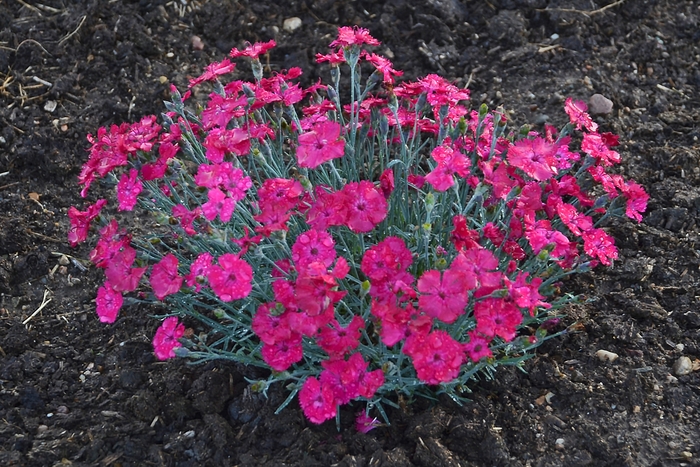« Previous Plant | Next Plant »
Dianthus
'Paint the Town Magenta' Pinks
2022 Proven Winners National Perennial of the Year® Members of the Paint the Town Series are prized for their bright colors and increased heat tolerance. This translates to better performance nearly nationwide, even in the heat-loving states. Flowers appear in early summer, and a quick shearing after flowering will encourage them to rebloom in early fall. This is the perfect size to edge the front of the sunny border and use in combination containers. ‘Paint the Town Magenta’ is one of the earliest Dianthus to bloom, producing ¾-1” wide, single vibrant magenta pink flowers and incredibly serrated petals. Flowers completely cover the plant when it’s in peak. Its glaucous blue foliage set it apart from other Dianthus of its type.
- » Beautiful in sunny borders and along pathways!
- » Fragrant, single flowers
- » Heat and drought tolerant
Dianthus grow best in loose, well-drained, neutral to slightly alkaline soils. Lime can be added to the soil if it is naturally acidic to raise the pH. Dianthus can be grown in full sun or part shade, but the foliage will not be as lush and fewer flowers will be produced if it is grown in hot, dry areas. Regular watering during prolonged dry spells will be necessary. However, they are tolerant of short periods of dryness. Do a thorough clean-up in the fall to prevent pest and disease problems, and add a layer of mulch to protect the evergreen foliage. As soon as the weather begins to warm up, remove all of this mulch to prevent crown rot.
- Height
- 6 - 8 in
- Spread
- 12 - 14 in
- Zone
- 4-9
- Color
- Pink
- Categories
- Perennial
- Breeder
- Proven Winners
- Tags
- Attracts Butterflies; Blooms all Season; Border or Bed; Cut Flower/Foliage; Drought Tolerant; Fragrant
Check back soon for additional information on 'Paint the Town Magenta' Pinks.
Dianthus grow best in loose, well-drained, neutral to slightly alkaline soils. Lime can be added to the soil if it is naturally acidic to raise the pH. Dianthus can be grown in full sun or part shade, but the foliage will not be as lush and fewer flowers will be produced if it is grown in hot, dry areas. Regular watering during prolonged dry spells will be necessary. However, they are tolerant of short periods of dryness. Do a thorough clean-up in the fall to prevent pest and disease problems, and add a layer of mulch to protect the evergreen foliage. As soon as the weather begins to warm up, remove all of this mulch to prevent crown rot.
